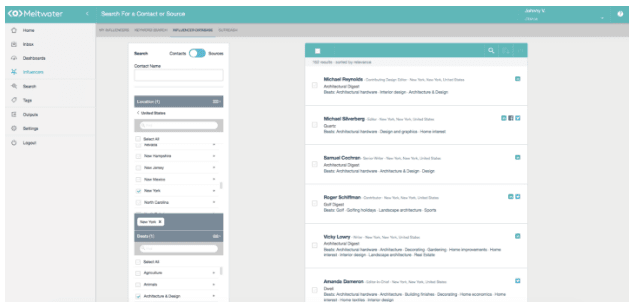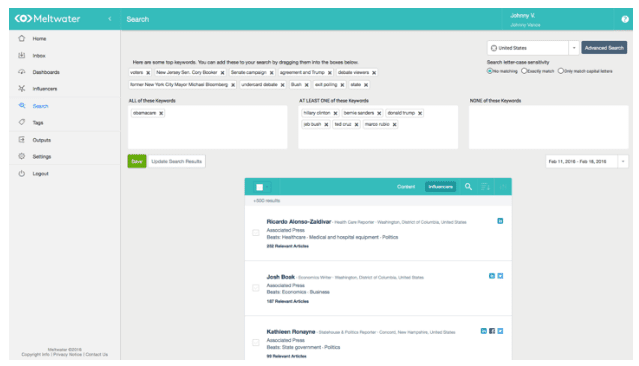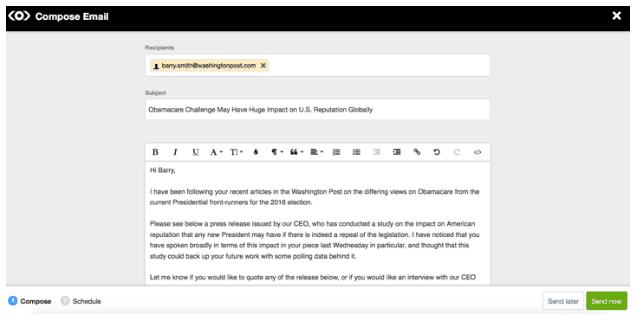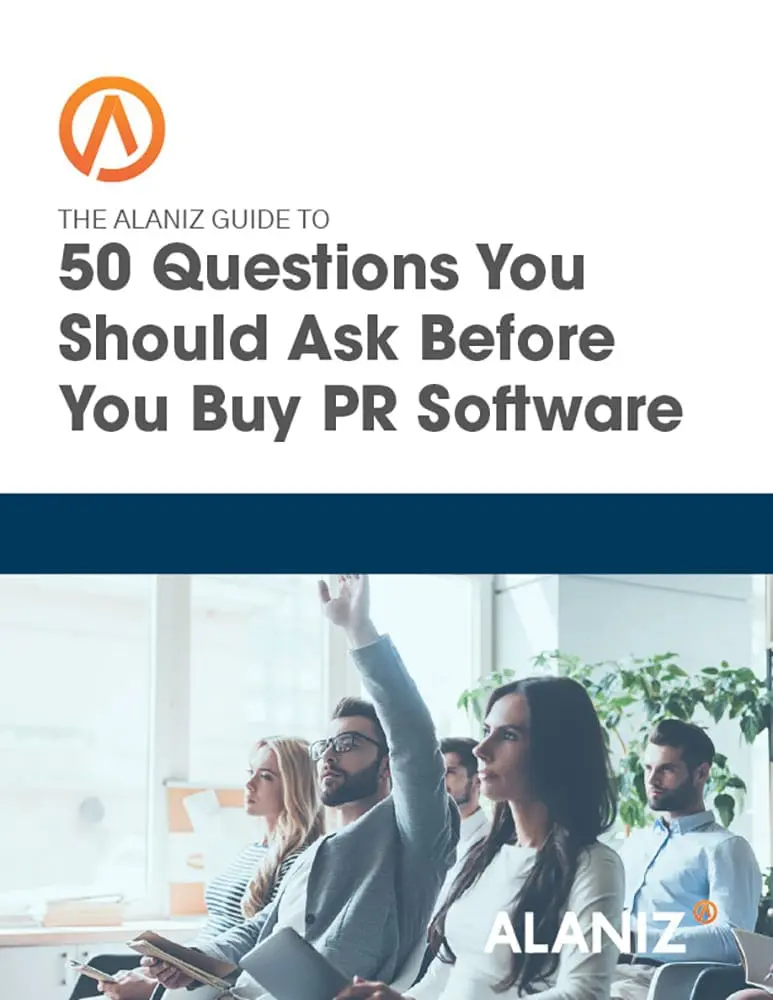This blog post is part of “The Ultimate Guide to Public Relations” blog series.
Meltwater began its life in the early 2000’s as a platform to search and track online news–transforming the traditional press clipping service into a more automated, intelligent media monitoring service. It has since evolved to add engagement and analysis and is now one of the largest media distribution platforms on the market. It was among the first major media distribution platforms to track bloggers and social publishers in addition to traditional media and adds “influence” rankings to its search results. It includes new media publishers into its database and is able to rank by influence giving Meltwater a leg up on its rivals, and it has also added natural language search to go give PR managers visibility into who is covering specific topics now, regardless of beat or publication. It offers powerful features for companies and agencies, especially for businesses that tilt toward heavy social media communication.
Meltwater makes it possible to easily track news based on search criteria, receive alerts, build media lists, and distribute press releases to specific journalists and/or use the platform to distribute via a wire service (Meltwater uses Marketwired). You can also send emails directly to specific journalists–with a personalized pitch and press release or article–from within the Meltwater interface.

What’s New
The “jewel in the crown” of Meltwater, according to Johnny Vance, Director of Strategic Programs at Meltwater, is the ability to identify journalists and social influencers using proprietary natural language processing (NLP) technology. Meltwater’s Keyword Search feature focuses on finding people based on the content of their recent coverage, not just a predetermined beat or outlet. The goal is to find the most relevant person to speak with based on real-time results. In contrast to traditional databases that offer more basic searches of their databases by beat, role, outlet, or geography – not by words used in the article.
Here’s what Johnny says about the Keyword Search tool. “The Keyword Search feature is the most effective way to build a media list. You can find influencers writing about very specific terms that would never be considered to be a ‘beat’ by traditional media databases, and you can understand why they have been marked as relevant by seeing the articles they have written that match your criteria. By clicking their profiles, you can really get a sense of what else they cover, how they like to be pitched, and what their social footprint is like. Media contact databases should be more than just a Yellow Pages, and our tool allows you to create real relationships based on relevant results, not just a list of phone numbers and email addresses.”
The goal is to help you find both the most relevant audience for your story and to engage with the influencer in a more meaningful way. You can research a writer’s recent content, their social channels, and other biographical information. Meltwater also offers “pitch tips” for journalists that are constantly being updated by their Media Research Associates.
“This approach allows Meltwater clients to avoid what we believe to be the biggest sin in the world of media outreach, the spray and pray approach,” according to Johnny.
“Influencing the influencer in a relevant and targeted way is the best way to ensure quality coverage of your organization,” Johnny says, “and to stand out from the noise and dreaded PR spam that inundates journalists.” To this end, another feature Meltwater offers is the ability to track any or all content published by the specific people on your media list. That can help you to stay up-to-date on what your key influencers are writing about, and will provide increased familiarity with their interests, style, and topic area. This can help you shape the conversation around a certain topic to include your organization.
Search for Influencer
The screenshot below shows you Meltwater’s interface for searching for influencers. Once you find the right people, click their profiles to find out more about them. The platform allows you to drag and drop them into a list.

When you’re ready to craft that release, click on Outreach. It will open a preloaded template for your organization to send email from your own address.

After you have sent the release, you can analyze who has read it and who hasn’t. You will also be able to create a search to follow the influencers you approached and to monitor and analyze any pick-up of your release.
Meltwater also has features that allow users to publish newsletters to customized lists, to build newsfeeds, and add them to a company website, and to create a custom dashboard to visualize media coverage. It also offers a tool to measure “media sentiment,” using its natural language search capabilities to calculate the tone of online press mentions.
Public relations campaigns can be complex and time-consuming. Platforms like Meltwater aim to make it easier by bundling some of the moving parts–research, planning, writing, relationship-building, pitching, analyzing, and reporting. Meltwater’s core strength is in media monitoring and advanced search capabilities. Of course, a platform can only do so much. You also have to have a good, newsworthy story and PR strategy. For more on this see our blog, The Alaniz Guide to Press Release Distribution Best Practices.
This blog post is part of “The Ultimate Guide to Public Relations” blog series.




